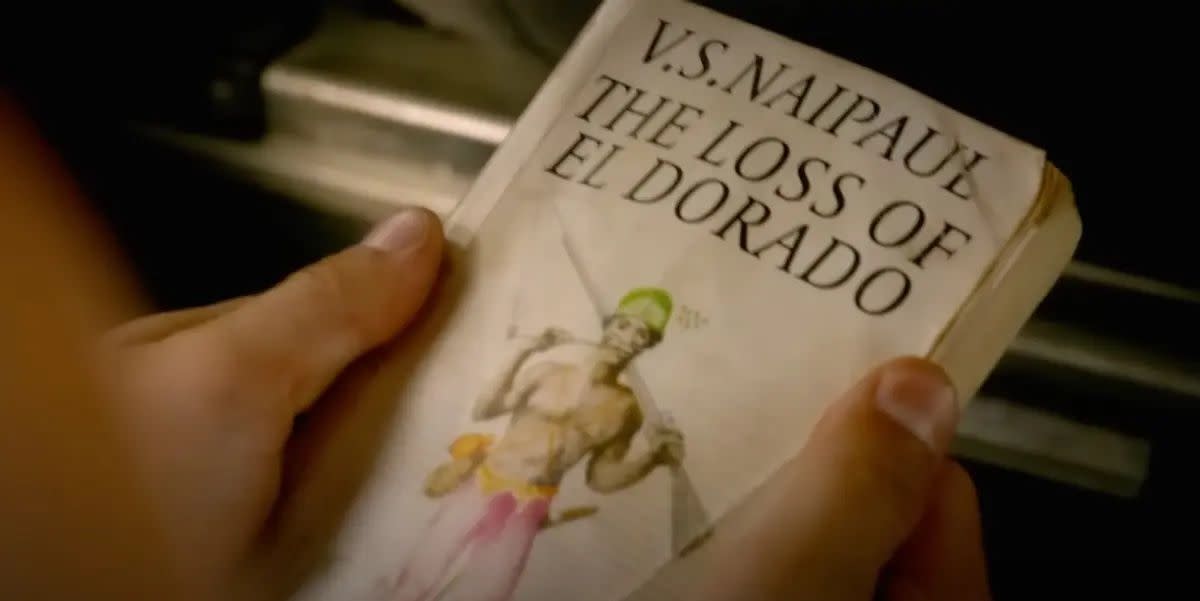Spoiler: 'Outer Banks' El Dorado Treasure Probably Isn't In North Carolina

"Hearst Magazines and Yahoo may earn commission or revenue on some items through these links."
In the third season of Outer Banks, which just dropped on Netflix, the Pogues have already managed to get themselves into quite a bit of trouble (again) while searching for a new mystical treasure: El Dorado. It quickly becomes clear that John B. and the rest of the gang might actually find what they're looking for this season—but they're gonna make a lot of other people (read: the Kooks) pretty upset in the process.
In case you need a recap, last season of OBX left the crew—John B., Sarah, Pope, Kiara and JJ—on a deserted island, "Poguelandia," one step closer to finding John B.'s dad and the infamous original treasure the group sought out. In the sneak peek for season 3, the Pogues are still on the island, giving them plenty of time to formulate a plan to find El Dorado, the mysterious lost City of Gold.
If you are an OBX fan, you have probably caught on that the show can be a little, well, far fetched. But what about this "El Dorado" treasure? Is it *actually* a real thing? Below, Women's Health sets the record straight with all the details.
El Dorado has popped up in other 'treasure hunting' stories.
OBX is not the first show to reference El Dorado. In fact, there's literally a movie called The Road To El Dorado, (if you remember that masterpiece, you were defs a 90s kid).
It's also been referenced in movies like Indiana Jones, National Treasure: Book of Secrets (everyone knows Nicholas Cage is the OG treasure hunter), and more. Basically, if there's a treasure-hunting series or film, El Dorado has probably been mentioned once or twice. It was only a matter of time before the Pogues caught up.
"El Dorado" literally means "The Golden One."
The phrase originally referenced the kings or rulers of the Muisca civilization located in the Andes in modern-day Colombia, between 600 and 1600, according to World History Encyclopedia. The phrase translates from Spanish into "The Golden Man," "The Golden One," "The Gilded One" or simply "The Golden."
The world encyclopedia and BBC explain that during the early civilization's coronation ritual, the king was covered in gold dust and jumped into the sacred Lake Guatavita. The king would also be surrounded by high priests on rafts who would throw in gold jewelry as an offering to the gods.
Some accounts report that the kings covered themselves in gold dust and then washed it off in the lake every day, according to BBC News. Eventually, the term's meaning expanded from referencing a singular person to the entire region around Lake Guatavita. Ironically, the Muisca people never associated gold with wealth.
"For the Muisca of today, just as for our ancestors, gold is nothing more than an offering... gold does not represent wealth to us," Enrique Gonzalez, a Muisca descendent, told BBC News.

Spanish colonizers contributed to the legend.
In addition to throwing gold jewelry into Lake Guatavita, ancient civilizations also buried their gold as offerings to the gods, per World History Encyclopedia. Much later, in the 1500s, Spanish conquistadors heard stories of the "Golden One" and the coronation ceremonies, and began searching for gold in South America to send back to Europe.
These often-brutal conquests took place for years with many famous explorers and colonizers, including Sir Walter Raleigh, searching for the gold they believed had been left behind by the Muisca people.
In 1636, Juan Rodriguez Freyle, another Spanish conquistador, documented the stories of the Muisca people in detail. These stories now serve as the basis for the legend today, according to World History Encyclopedia.
"El Dorado" is now a combination of several legends.
Another element of the mystical story has roots in the writings of Spanish soldier and author, Gonzalo Fernández de Oviedo, per LiveScience. His writings from 1541 similarly referred to a monarch covered in gold. And since Oveido's writings were based on Ecuador, some people assumed "El Dorado" might be located there.
In 1539, Friar Marcos de Niza coined the idea of the "Seven Cities of Cibola" in connection to the legend of El Dorado during an exhibition to Mexico City, according to National Geographic.
It's probably not located in the Outer Banks.
So, depending on what you mean when you ask, "Is El Dorado real?", the answer could be yes or no.
With most of the real history of "El Dorado" taking place in South America, it doesn't seem likely that the Pogues will actually discover the lost treasure in season 3, even if it does "exist" in their world. Who knows, though? Perhaps John B. is the new Ben Gates, or maybe they'll find his dad, instead.
Either way, you will just have to watch Outer Banks season 3 to find out.
You Might Also Like

